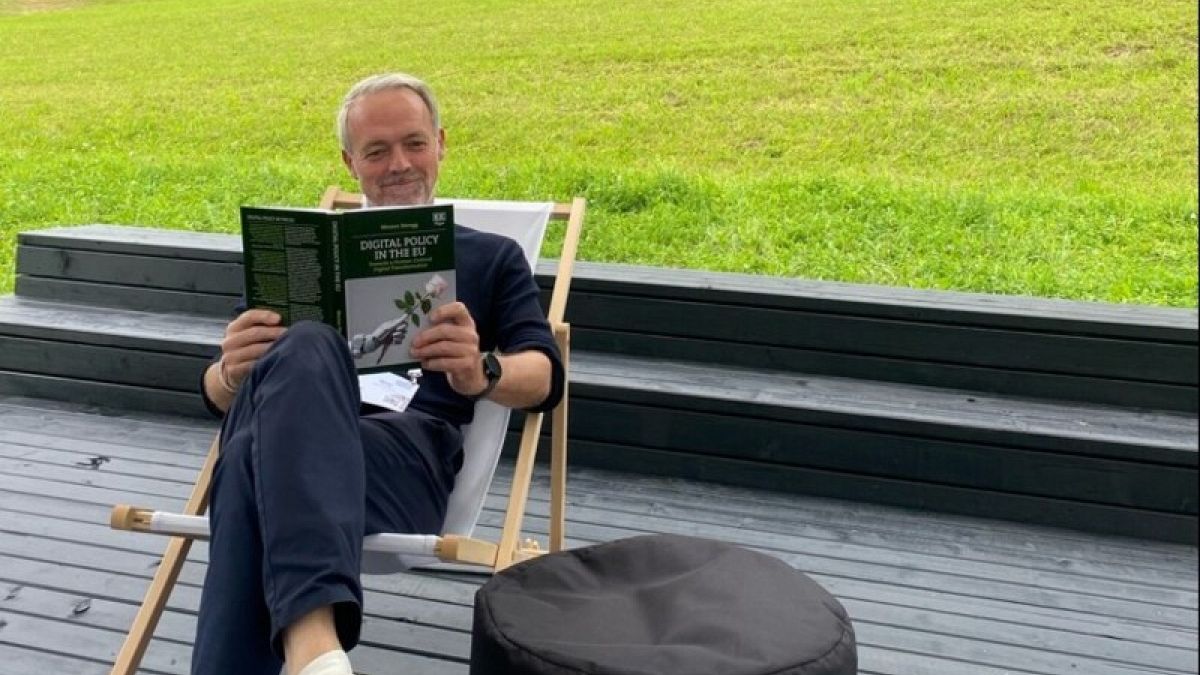Vermont
Vt. officials seeks input on Act 250, housing reforms

MONTPELIER, Vt. (WCAX) – Vermont administration officials are seeking feedback on a plan that could shape the future of housing development in the state for decades to come. A report from last week shows that Vermont needs over 24,000 new housing units to keep up with demand.
Vermont lawmakers this spring overrode Governor Phil Scott’s veto on a bill that creates a new tiered system for where Act 250, the state’s signature land use law, would be applied. A map released last month shows where there are Act 250 exemptions for housing projects over the next two years. Lawmakers intended to have more construction in downtown areas and away from natural resources like streams, forests, and farms.
Local planning commissions are now beginning the process of determining how Act 250 should be applied in towns over the long term. And Vermont Gov. Phil Scott and administration officials are calling on Vermonters to get involved so that more housing projects will be exempt. It comes as the governor continues to criticize lawmakers for not going far enough to allow more development.
“It’s a very small area when you look at what we’re really doing, and some of the areas that are going to get these exemptions, it doesn’t do anywhere near enough to counter this crisis we’re facing,” Scott said.
But a robust debate continues at the Statehouse and elsewhere about to what degree the state’s housing shortage can be attributed to Act 250 versus other factors including short-term rentals, workforce and supply chain limitations, land availability, and the climate for lending. Democrats last session also floated a tax on the state’s top earners to fund millions in affordable housing over the next decade. That proposal didn’t make it over the finish line.
The governor and his team acknowledge the workforce and supply challenges but say it’s really an issue of supply and demand. They also point to a program that gives money to landlords to fix up old apartments, or another that helps people access new mobile homes. The programs are intended to create any kind of housing unit to take pressure off the market, which has around a 2 percent vacancy rate statewide.
Copyright 2024 WCAX. All rights reserved.

Vermont
More people want to come to Vermont for medical aid in dying than the system can handle

Ever since Vermont removed its residency requirement for medical aid in dying last year, Dr. Diana Barnard hasn’t been able to keep up with the phone calls from would-be patients.
“It can be hard. I have, like, three calls sitting on my phone right now,” she said during a conversation at Porter Medical Center in Middlebury, where she works as a palliative care physician.
Vermont is one of nearly a dozen states where doctors can prescribe lethal medication to terminally ill patients who want to hasten their death. For the first decade the law was on the books, only Vermont residents could use it. Then, in 2023, lawmakers opened the program to out-of-staters. The change brought an influx of interest to the small state.
“The floodgates opened, and suddenly we were receiving these calls,” said Dr. Tim Schafer, a physician at Grace Cottage Hospital in Townshend. He prescribes for medical aid in dying, as do some of his colleagues. Because of their location in southern Vermont, they often get requests from Massachusetts, New Hampshire and other nearby states.
Barnard has also taken on a number of out-of-state patients, including Rita Mannebach of Florida. Earlier this year, Barnard confirmed Mannebach had terminal lung disease and prescribed the drugs. Mannebach and her family worked with a local death doula, Meg Tipper, to arrange housing in Vermont and manage other preparations, both logistical and emotional.
Mike Mannebach
/
Courtesy
On a phone call from a rented house in Burlington, Mannebach described her plans for her last day alive.
“On Thursday morning, we’ll have a little program at 10 o’clock that we just put together ourselves,” she said. “There will be a symbolic ceremony of letting go — me letting go of [my family], them letting go of me. And then I’ll just have some last words that I say — may you be peaceful, may you be happy, that kind of thing.”
She had no doubts about what she wanted to come next. “It’s all about quality of life for me. It results in less suffering,” she said.
Building capacity
Barnard is well-known in this sphere of the medical world. She filed a lawsuit against the state with one of her patients, a Connecticut resident who wanted to use medical aid in dying in Vermont. The suit led Vermont to remove its residency requirement, and it led a lot of patients to Barnard — many more than she can responsibly take on.
“Building capacity is important,” she said. “A big part of my work is trying to educate other physicians, and, in a way, kind of inform other physicians about the importance of this practice, about mentoring them through learning how to do it, so that they can feel comfortable doing it on their own.”
For busy physicians, it can feel like a big ask. Most doctors here already have more Vermont-based patients than they can handle. Every new patient requires significant paperwork, multiple medical consultations and emotional support. Medical aid in dying patients have to be in Vermont for two required appointments and to take the medication.

Sophie Stephens
/
Vermont Public File
Opening up the program to out-of-staters “has profoundly changed my life, our clinic function,” said Schafer at Grace Cottage. “We just had a lot to learn about how to pull this off logistically.”
Schafer feels a deep calling to help his patients who are suffering, and he’s had to come to terms with not being able to help everyone who reaches out.
“Our call center assures us that there’s a volume of calls coming in,” he said. “And finally, you know, it kind of started surpassing what could be handled. And we finally agreed — we have to limit new consults to one per week.”
To help with logistics, Schafer and other prescribing doctors rely on a new network of volunteers called Wayfinders. It was established earlier this year by Patient Choices Vermont, a nonprofit that educates the medical community and the public about medical aid in dying. It also advocated for the passage of the original law in 2014.
Wayfinders is made up of current and retired hospice nurses, social workers and death doulas who can support families and patients navigating medical aid in dying.
Suzanne Baxtresser, a retired hospice nurse, volunteers her services in the Brattleboro area. For her, the biggest challenge is finding housing where patients and their families can stay.
Finding a safe place
As Vermonters well know, the state faces a severe housing shortage. It’s also a popular tourist destination, which makes short-term rentals even harder to come by than doctors.
“We want people to take the medicine in a safe place,” Baxtresser said. “We want people to know that nobody’s going to come knocking on the door saying, ‘What’s happening?’”
While some Airbnb owners in the area are amenable to people using medical aid in dying on their property, they’re often booked up. “When summer comes, everything gets rented,” Baxtresser said.
One family with an unused property in southern Vermont has essentially donated it to the cause — physicians and Wayfinder volunteers call it “the safe house.” And a representative for Patient Choices Vermont said they are actively working on a longer-term housing solution.
If and when that happens, Baxtresser believes the increase in out-of-state interest will turn into an increase in out-of-state usage.
“If patients knew there was a clear path, they would come,” she said. “But right now we don’t have the support. We don’t have the structure to support that.”
With the help of the Wayfinders, Rita Mannebach was able to find a place to stay for the weeks before her death. Her years volunteering as a hospice worker helped her feel ready for what was to come.
“I’m very comfortable with death,” she said. “I’m 84, and I’m at peace with the whole thing. To me, what happens after is totally unknown. I don’t know what’s going to happen. But I don’t have any fear. So I feel perfectly at ease about the whole thing.”
Two days after our interview, she followed her plan. Rita Mannebach of Florida died in Vermont.
After she passed, her family made plans for her ashes to be shipped back to Florida. Then, they tidied up the rental, drove to the airport, and went home.
Have questions, comments or tips? Send us a message.
Vermont
Welcome to the small Vermont town that's banning influencers

Read more: How to avoid being an annoying tourist.
In an article by the BBC, it’s reported the enthusiastic tourists were – at first – met with a warm welcome by Pomfret residents, but as more and more visitors caused disruptions to the small, 900-person community, locals have since called for a ban to save their peaceful town.
The BBC described Pomfret as a “quiet, unassuming place” with “a mere handful of businesses”.
However, this all changes when the new season comes into play, bringing with it hordes of out-of-towners and their cameras.
While the bijou town has been catering to tourists for years, the BBC publication states that its popularity increased two-fold after the images of a 115-acre private property renowned as the Sleepy Hollow Farm went viral on social media a few years back.
The photos show the red, orange and brown foliage decorating the elegant 1700s Cape Farmhouse on Cloudland Road. Since its viral moment, the scene of the farm and road has been dubbed one of the “most photographed places in the state”.
Residents pinpoint this spike in social media presence as the start of the seasonal influx of visitors, telling the BBC “things have gotten out of hand”.
Every autuml, residents report the number of visitors increases. These crowds, despite their excitement and adoration for Pomfret, seemingly bring more hassle than happiness to the community, with reports of multiple incidents where tourists have brought chaos to the town, such as traffic problems.
The BBC notes that come early autumn, cars are witnessed “coming to abrupt stops on a road with a 45-mile-per-hour speed limit, blocking one of two lanes.”
Pomfret Artistree Community Arts Centre exhibits co-ordinator Deborah Goodwin also shared her disappointment with the BBC, saying “It’s a beautiful spot. It’s too bad it’s been ruined for everybody.”
Goodwin recalls the past couple of years being out of control as tour buses “dump” people in the town. Worse, Goodwin told the BBC there have been multiple incidents where social media influencers have climbed over property boundaries with “no trespassing” signs, set up changing booths, got cars stranded in the road, and left bodily waste by the roadside.
To combat the budding issues of overtourism, a team of organisers set up a GoFundMe petition to call for government action. “[We have] experienced an unprecedented surge in Instagram and TikTok-fuelled tourist ‘influencers’ … [who] have damaged roads, had accidents, required towing out of ditches, trampled gardens, defecated on private property … and verbally assaulted residents.”
According to the BBC, the petition raised US$22,093 ($35,641) and because of the support, the local government decided to close the roads leading to the iconic farm for tourists during the peak of the autumn season (September 25 to October 16, 2024). This limits travellers’ opportunity to capture the perfect photo and better ensures the safety of locals and tourists alike.
Despite their pushback, the BBC reports the locals insist they are not “anti-tourist”. Instead, they are simply asking visitors to “treat their hometown with respect”.
Vermont
Watch: Dog named 'Buckethead' rescued from plastic container in Vermont – UPI.com

Subscribe | UPI Odd Newsletter
Sept. 4 (UPI) — A dog seen wandering for over a week in Vermont with a bucket-like plastic container stuck over its head has been rescued, an animal control officer announced.
Animal Control Officer Renee Falconer announced on social media that the dog, known as Buckethead, or Bucky, was captured Sept. 1, over a week after he was first seen with the container over his head in Derby.
The bucket, found to have come from an automatic dog feeder, had a hole in the end that gave Bucky a very limited ability to eat and drink, Falconer said.
She said Bucky was lured into a trap using McDonald’s chicken nuggets, which he was able to eat by shifting the bucket.
The container has now been removed and Falconer is caring for the underweight dog until he is healthy enough to be put up for adoption.
“He snapped out of the survival mode very quickly,” Falconer told WPTZ-TV. “He’s still a little leery about some things, loud noises, vehicles, four-wheelers, that kind of stuff, but other than that, he seems like a pretty sound dog.”
-

 Movie Reviews1 week ago
Movie Reviews1 week agoSlingshot (2024) – Movie Review
-

 World1 week ago
World1 week agoSwiss court convicts two executives of embezzling $1.8bn from 1MDB
-

 World1 week ago
World1 week agoCommission mandarin flags convergence of digital with industry
-

 World1 week ago
World1 week agoSevere drought forces early harvests in Serbia
-

 World1 week ago
World1 week agoRussia-Ukraine war: List of key events, day 915
-

 News1 week ago
News1 week agoTrump Vs Harris: The Battle Over Hot Mics Heats Up Ahead Of Key Debate
-

 News1 week ago
News1 week agoAfter months on the run, a murder suspect falls through the ceiling and into custody
-

 News1 week ago
News1 week agoThe rise of the Pumpkin Spice Latte : It's Been a Minute















